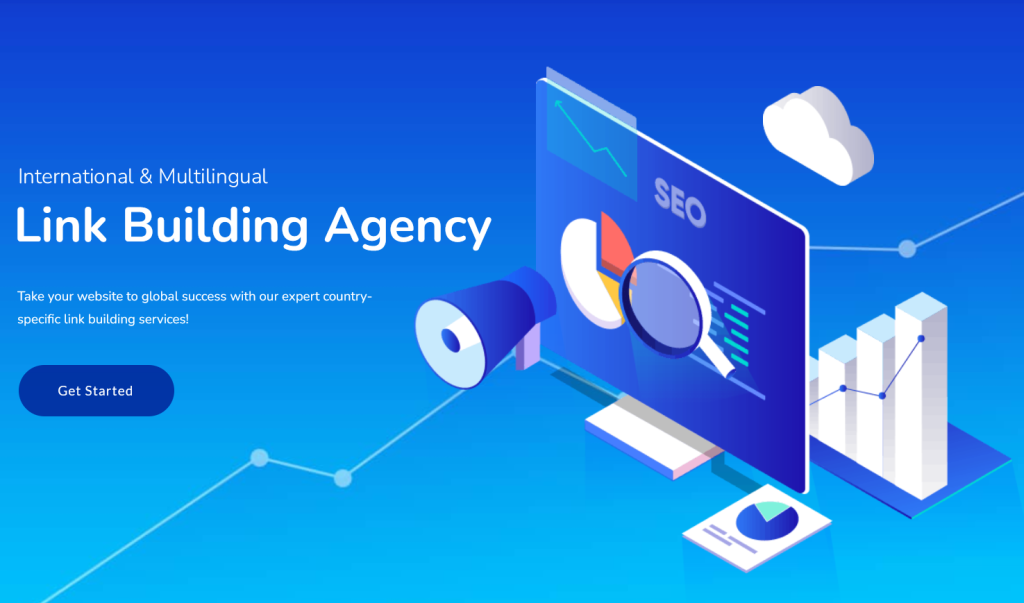
Chapter 1: International SEO Infographic


Chapter 2: International SEO Challenges
The SEO (search engine optimization) techniques required to market a multilingual or multi-regional website will present new challenges for optimization specialists. It would be a mistake to think that what works for a single language, single region website will work equally well for a multilingual or multi-regional website.
Any website that provides content in two or more different languages is considered to be multilingual. For example, a Montreal based business that provides its website content in both French and English is deemed multilingual.
When a website is designed to specifically target surfers in different regions or countries, it is considered to be a multi-regional website. A website can be both multilingual and multi-regional
That is, a website selling products specifically targeted at Canadian consumers would want to provide content in French as well as English, making it a multilingual site. If the same site has a version targeting the U.S. market as well, then it is also a multi-regional site.
Multilingual and multi-regional websites are essentially clones of a master website. Before starting work on any clones, you should ensure that on-page optimization on the original is complete.
This includes making sure that all images have alt tags, and that both HTML and CSS files are W3C compliant. Any errors in the code behind the original site will be carried forward into the clones, thereby increasing the workload in correcting them at a later stage.
The remainder of this document will present some guidelines that will help you in planning and deploying a multilingual or multi-regional website with SEO factors in mind.

Chapter 3: On-Page SEO for Multilingual Websites
When you build a site with a second language, your SEO techniques need to cater for searches carried out in the second language. You want Google to recognize the main language used on the site, or parts of the site. There are some things you can do to help.
Avoid language confusion
The search engines determine the language of a page based on its content. In the past, the engines were satisfied with reading the lang attribute in the page code, but this is no longer the case.
Having multiple languages on a page is normally a bad idea. The most common example of this type of page is where the navigation and other standard page features are in one language, while the content, or part of it, is in another. This can cause confusion, not only to Google, but also to surfers. Creating a negative user experience is always damaging.
Many sites opt to provide surfers with versions of pages that have been automatically translated. Even though translator tools are improving all the time, they will rarely provide 100% accurate translations.
Sometimes, the translations are meaningless. If you have such pages on your site, use your robots.txt settings to tell the search engines to ignore these pages. Otherwise, you run the risk of Google regarding them as spam.
Remember to translate any text that is not visible to surfers. For example, if you have images with alt tags in English, remember to translate these tags into the main language of the clone.
Use URLs that indicate the language
URLs that indicate the language are useful to human visitors. They will also rate more highly with the search engines if the page content matches the language indicator in the URL.
To demonstrate this point, imagine a Spanish site that also has a French version. Let’s say there is a page named http://example.es/casas-baratas.htm. Good names for the French version of the page would be http://example.es/français/casas-baratas.htm or, even better, example.es/français/maisons-à-bas-prix.htm.
In this example, both “casas-baratas” and “maisons-à-bas-prix” translate into English as “cheap houses.” Note that the links to the French pages would require you to escape the “à” and the “ç” characters.
While on this point, you should always use UTF-8 encoding on your web pages and URLs to ensure the non-English letters, and symbols for things like currencies, display correctly in the visitors’ browsers.
Country Code TLDs and Generic TLDs
TLD stands for Top Level Domain, and it plays a major role in SEO. We will be discussing TLDs in detail, so you need to understand the term. A TLD is, to all intents and purposes, the part after the last period in a root domain name. Some examples may better clarify this.
- The site “example.com” has a TLD of com, because “.com” is the last part of the root.
- The site “example.com/index.html” has a TLD of com, because “.com” is the last part of the root.
- The site “example.com/store/electrical/index.html” has a TLD of com, because “.com” is the last part of the root.
- The site “products.electrical.stoves.example.com” has a TLD of com, because “.com” is the last part of the root.
- The site “example.net” has a TLD of net, because “.net” is the last part of the root.
ccTLDs
Using Country Code Top Level Domain names (ccTLDs) can help Google recognize that a site is targeted at a specific country. Examples of ccTLDs are .fr for France and .es for Spain.
These ccTLDs are also clear indicators to surfers that the content is aimed explicitly at a particular country. Be aware that there may be restrictions on who can use ccTLDs, so you will need to check first to see if you are eligible if you plan to use one.
As already stated, using ccTLDs can be a great aid in identifying a geo-target. If you have a website called mydomain.de, this is a strong indicator to surfers and the search engines that the site is targeted at Germany.
The advantages of using ccTLDs are:
- The target country is clearly identified.
- It makes it easier to separate sites, e.g. mydomain.de, mydomain.ca.
- The location of the server will not influence the search results.
- It may be a legal requirement in some countries that you have a ccTLD in order to do business in them.
There are few minor disadvantages, and probably no significant disadvantages to ccTLDs.
The disadvantages are:
- ccTLDs are usually more expensive than gTLDs. For some countries, they can be significantly more expensive.
- They may require additional infrastructure
- They may be subject to legal restrictions
gTLDs
Generic TLDS, or gTLDs, are names that are not associated with a specific country. These include .com and .org. Note that Google may regard some ccTLDs as generic to reflect how surfers and webmasters perceive the name.
One example is .tv, which is the ccTLD for Tuvalu, but which is most widely used for sites that have something to do with television. Therefore, Google treats .tv TLDs as gTLDS. Google also regards regional domains like .eu and .asia as gTLDs.
Google Search Console
If your site has a gTLD but you want to target it at a specific country, you can use the free Search Console provided by Google to let Google know this. However, that is only going to work for Google, and not for any of the other search engines. This tool allows you to target on the domain, subdomain or subdirectory level.
Language vs. Country Targeting
You should also exercise some caution when geo-targeting your site. You need to take a different approach to geo-targeting if you need to target more than one country. For example, if your French language site is about real estate agent business in Montreal, then it’s fine to geo-target Canada.
On the other hand, if your site offers English language tuition to French speakers, you would not want to target just Canada, but also other countries where French is spoken.
Let Google know about other language versions of your pages. You can do this using meta tags. If you have a page in Canadian English and the same page in Irish English on a different domain, your Canadian page should have the meta tag: <link rel=‘alternate’ href=‘http://example.ie/en-ie’ hreflang=‘en-ie’ /> and your Irish page should have the meta tag: <link rel=‘alternate’ href=‘http://example.ca/en-ca’ hreflang=‘en-ca’ />
URL structures
Website URLs can be structured as domains or as subdomains. A domain is identified like mysite.com. A subdomain is actually a subdirectory of the main domain and is identified like info.mysite.com or mysite.com/info/.
Server location
Search engines can identify the country in which the web server is physically located from the IP address. It might be beneficial to host your website on a server in the country you are trying to target. This would be especially helpful if there are no clear indications in the content that identify a geo-target.
For example, if you are building a website that contains generic medical information and want to target it at Australian users (perhaps for advertising purposes), it is possible that none of the content would indicate the target country.
Apart from using ccTLD names, using a server based in Australia would help Google to realize your target audience is also located there.
Meta data
Meta data is contained in the head section of HTML pages. It includes the name and description meta data, which should contain a name for the page, and a description of the contents. It should also have the keywords associated with that page. The head section additionally contains the page title.
Meta keywords are no longer as important as they used to be to the search engines. There is however, some benefit in including them as part of your SEO. The page title, and the meta name and description, are more important. The search engines often use the information contained in these to display it in the site summary shown in their results.
It is important not to overlook the head section when creating other language copies of your web pages. The title and meta description should be translated into the target language. If not, you may manage to score highly in search engine results, but you could get very few click throughs.
If a surfer carries out a search in German, and your SEO has been good enough to get your site returned in the results, it will be pointless if the surfer sees the site summary in a language other than German.
Keywords
You can use the same keyword tools that you already use when researching keywords in a foreign language. The problem you will face is knowing what keywords to research in the foreign language.
Once again, using a translation tool to give you your keywords is fraught with hazards.
Most words have synonyms. As an example, “property” and “characteristic” can mean the same thing.
If your target keyword is a translation of “property” but the translation tool generates the foreign language’s word for “characteristic,” then clearly you are using the wrong keyword.
You will really need a local expert to tell you what keywords you ought to be targeting. Note that this expert has to be familiar with the culture of the local area, and not just the language. Refer again to our example of how the Spanish word “coche” means different things in different geographical areas.
Your local expert should also be able to advise on common slang terms that are used widely in the local language, since many people will use such terms in their searches. If you are confined to competing for only formal keywords, you will be missing out on a lot of potential traffic.
Many SEO experts make good use of deliberate misspellings in keywords to tap into the searches where people use common misspellings. Only local SEO experts will have the knowledge to tell you what deliberately misspelled keywords to use.
Duplicate content
Search engines favor sites that deliver unique content. When you build a multilingual website, you will be publishing the same content in different languages, and this can have a bearing on SEO. On occasions, you may have the same content in the same language but on two different domains.
For example, you might have Spanish language content on http://example.es and the same content example.com/spanish. To avoid being potentially penalized for duplicate content, you should automatically redirect visitors, including the search engines, from the duplicate page to the original version. This can be done in robots.txt, or in the page’s meta tags.

Chapter 4: Proper Website Translations
Automatic translation tools are powerful and can be beneficial in providing text that the search engines can index. However, the primary reason you want to score highly in search results is to bring human traffic to your website. When those humans arrive on your site, you want them to see error-free text that makes sense.
If the text is more than a short phrase, automatic translators simply cannot generate error-free translations. If you need convincing, just copy some foreign text from an online newspaper into a translator and see the results in English. You may be able to understand it, but it will certainly not provide a fluent read.
Poor grammar and sentence construction can seriously damage a surfer’s confidence and trust in a site. The chances of making a sale or getting a sign-up are greatly reduced if the text is not perfect.
Research has shown that people prefer to interact with sites that are in their own language. They are more likely to buy products from such sites, even if the products cost more than the same products cost on a site in a different language.
However, they are unlikely to view a site favorably if it is obvious that the translation was done automatically. Always get your translations done by a competent expert in the target language.
Different versions of languages
We have already pointed out that having poor translations of your text into a foreign language can alienate speakers of that language. The issue of translations is more complex than that.
Even countries that speak the same language can have significant differences in the way the language is used. American English and U.K. English often have different spellings for the same word.
Here are some examples:
American English | U.K. English
favor | favour
candor | candour
realize | realize
They can also use different words to describe the same thing:
American English | U.K. English
faucet | tap
suspenders | braces
garbage bin | rubbish bin
If a U.K. site that sells taps, braces and rubbish bins wants to penetrate the U.S. market, it might get away with using U.K. English spelling, but would certainly need to change the product names to ones that would be recognized by American consumers for what they actually are.
A Spain based site offering car rental would use the word “coches.” In Latin America, “coches” are buses. If the Spanish site wants to rent its cars in South America, it will not have much success if it continues to use “coches,” because it will be attracting traffic that is interested in renting buses.
Solution
It should be clear from these simple examples that poor translations will affect businesses in two ways:
1 – Surfers may consider the site is sloppy in its presentation, or that customer support will be of no use because of language difficulties.
2 – Search engines may be indexing the site and returning it in results for searches that are not relevant.
To ensure that your multilingual or multi-regional website will not alienate local users, it is imperative to use translators who know and understand the original language and the target language.
English as a global language
English is spoken as the first language in many countries, and is also widely taught as a second language in a huge number of countries. Just because it is widely used does not mean that website owners should assume that surfers will be willing to trade on an English only website.
A person can find it difficult enough understanding terms and conditions in his or her native language, depending on the level of legalese used. Expecting non-native speakers to grasp these is a non-starter.
Brand and Trademark Issues
When you intend to start marketing proprietary products and services abroad, you need to consider whether to use the same brand names for your products in the foreign country, or whether to translate them into the foreign language.
If you use names for products or services that might be difficult for foreigners to understand, to remember, or to pronounce, then translating them is probably best.
You need to be careful when translating the names of your products or services into the target languages, as you may unwittingly end up infringing another firm’s trademarks.
To avoid this possibility, it will be necessary to carry out research to make sure your names are unique. This is yet another example of how important it is to tap into local knowledge before launching multilingual or multi-regional website.

Chapter 5: International Link Building
It is well known that building good quality inbound links is a great way to boost placement in search engine results. When you are trying to promote your geo-targeted website, you cannot rely on the same link building strategies you use to promote a U.S. site.
These are the key differences.
Directories
The value of getting links from directories for U.S. sites has been greatly devalued. This is simply because there are so many of them. Paying for directory entries is most often a waste of money. Outside the U.S., directories can still be valuable resources in boosting search engine performance.
For example, a search for “estate agents in Spain” on Google.com returns a directory site “estateagentsespana.com” in the top three results, while a similar search for “estate agents in USA” has no directories on the first page. Getting links from directories in your geo-targeted area may still be worthwhile.
Source of backlinks
The country that your links come from plays an important part in how your site is ranked. You may have a site with an Australian ccTLD, let’s say example.au, and a generic version example.com.
If you notice that example.com is always ranking higher than example.au, the chances are that your links to example.au are primarily coming from outside Australia. You should concentrate on getting links from sites with the same TLD as your site.
Anchor text
Whenever possible, the anchor text in links to your alternate language website should be in that site’s language. If you are building links to a Spanish site, then the anchor text should be in Spanish, but only if it makes sense.
For example, if you have a link from an English language page to a Spanish version of the same page, the anchor text should be in Spanish.
In contrast, if you are getting a link from a third party site, the anchor text should be appropriate for the page you are getting the link from. Third party sites will be unlikely to accept link requests if the anchor text would look out of place on their pages.
Blogs, social networks and forums
Using blogs, social networks and forums to promote a website is a tried and trusted method. The method works equally well with multilingual or multi-regional websites, but, once again, you are going to need some help to do this work if you are promoting in a language in which you are not fluent.
It may not be as critical to have flawless language in forum postings as it would be on your web pages. The main purpose of posting on forums is to build links back to your website.
Nevertheless, there is always an opportunity to be perceived as an expert when partaking in forums, and this opportunity may be missed if the language and grammar used in the forum posts is flawed.
The same thing applies to blogs. You should always try to maintain the same high standards on blogs as you do on your web pages. Many surfers do not differentiate between blogs and the commercial websites they link to.
They see blogs as extensions to business websites. If a blog post is badly written, or is full of grammatical, spelling and comprehension errors, and that blog post is associated with your site, it can generate a negative feeling among people who see it.
Multilingual Guest Posting
In recent years, guest posting has become the go-to method for building relevant and high quality links all over the world. With this link building method, all kinds of websites are able to acquire the highest quality links possible, without the fear of any Google penalties or negative effects.
Guest posting means that you provide a post, in other words a unique article to another blog or website. This third-party site then posts your article with the backlink selected by you, in the body of the post. You can look at it as a value exchange between two sites, where one provides the content, while the other the backlink.
Guest posting has also evolved to some degree during the years, because Google went after guest posting networks or in other words guest posting farms quite heavily. These artificial sites provided low quality content and only existed for the sake of building links.
That is why it’s important to get these type of links only from genuine blogs that also have some traffic in the form of at least 1000 unique visitors per month. Moreover, nowadays most of these blogs don’t tag the post as paid or sponsored, but they do ask for financial compensation, because that is just how the link building marketplace works.
Okay, so we can conclude that guest posting is the best type of link building that exists today. But how do you find these blogs that accept guest posts? And especially when these blogs are not even in the same country or same language as yours?
Well, it is best to leave this daunting task to local experts, or even better, to an international link building agency like us. We can help you with our multilingual guest posting services in 48 countries, so you can acquire the best links possible in almost any country, and achieve great SEO results in almost any language.

Chapter 6: International SEO Checklist
Hopefully, you will now be aware of the extra measures you need to take to manage SEO for multilingual and multi-regional websites. In summary, you need to:
- Choose ccTLDs, if possible.
- Avoid confusion to humans and search engines by sticking to a single language on a page.
- Use helpful URLs.
- Tell the search engines about duplicate content and about preferred versions of pages.
- Concentrate on getting good links from sites with the same ccTLD.
- Link to all versions from within each version.
- Get all translation work done by people with local language and cultural knowledge.
There is a considerable amount of work necessary to successfully market multilingual and multi-regional, and an additional workload in maintaining many versions of a single website. The SEO task is probably best left to SEO experts who have experience in promoting websites in the target market.
Website owners will then be free to concentrate on managing the various websites. When any changes are made to the main site, those changes may need to be reflected on many other pages, and that may be a time consuming task that requires the owner’s full attention.



